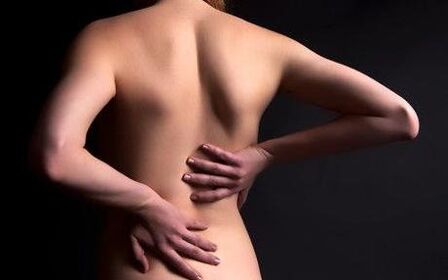
Osteochondrosis is the main disease of the generation. The main catalyst for the development of the disease is a sedentary lifestyle. Since the late 1990s, more and more people have been facing osteochondrosis due to work and lifestyle changes. Osteochondrosis is a displacement of the cartilage discs followed by a degenerative, negative lesion. Osteochondrosis manifests itself in various unexpected places. Osteochondrosis of the thoracic region is considered an unpleasant, complex disorder. Pain, difficulty, immobility accompany the disease. Don’t despair - there is an effective treatment for chest osteochondrosis!
Chest osteochondrosis is different from other types. Chest degenerative disc disease - displacement of the thoracic vertebrae. Osteochondrosis chest pain does not bother many, the load on the chest region is not high.
The thoracic spine is inactive, more severely, less commonly damaged. The links in the thoracic region are less elongated, more spiky, and are joined to the ribs by joints that severely restrict the movement of the spine. This gives strength to the department - it protects the internal organs better than the pelvic region.
Chest pain caused by osteochondrosis is often transmitted by people as symptoms of other diseases. Some explain that they pinched their nerves from a long session. Others argue that these are tense muscles that cannot relax. In case of pain, consult a doctor.
Regardless of the type or feeling of pain, see your doctor. We are talking about deteriorating health, the disease is becoming chronic.
Symptoms of chest osteochondrosis
It can be difficult to distinguish the symptoms of chest osteochondrosis from the symptoms of similar diseases. Your doctor will find out and prescribe treatment shortly. Symptoms as in radiculopathy - Compression of the nerves in the spinal cord. It feels like an intervertebral hernia after intense physical exertion.

The pain in osteochondrosis of the chest region is manifested in the upper part of the class - the pain passes through the area, penetrating the shoulder blades, shoulders, abdominal cavity. Loss of sensitivity of the vertebrae is often observed with prolonged pain. Consequence - the lower vertebrae lose their sensitivity and become inactive. The mobility of the bones of the thighs deteriorates.
People with osteochondrosis of the chest experience pain in different ways. There are two types of pain:
- Dorsalgia (prolonged, aching pain accompanied by limited mobility of the intercostal discs in the sternum)
- Dorsago (sudden, acute pain in the form of a seizure)
If you can’t see a doctor, you may want to perform exercises that relieve pain and minimize spinal sprains. You should not wait for a full recovery during the gym - it temporarily reduces the pain and relaxes the discs. It is advisable to make an appointment with a doctor.
Pain relief exercises
It is a good idea to prepare your body before you start exercising. Take a shower, do a light warm up, let your muscles warm up. When you feel that your pain symptoms have improved, start exercising.
Therapeutic exercises are recommended if the patient has no symptoms of acute pain! Otherwise, if the movement is painful, it is advisable to abandon self-medication, the gym is preventative in nature, it helps those who do not suffer greatly from the symptoms of chest osteochondrosis. Do not take tablets for breast osteochondrosis without a doctor.
Tasks:
- The exercise is done with a chair. Sit on a chair with your upper back resting on your back. Bend back so that there is a lot of movement on your chest. Perform the exercise slowly tilted to the starting position without looking up from the back of the chair;
- Exercise improves the function of the lungs, the chest region. Take a towel, wrap the lower third of your chest. As you exhale, squeeze the towel to increase the amount of air coming out of your mouth. Exercise counts for the prevention of respiratory diseases, warms the chest muscles, reduces pain;
- Exercise - prevention of osteochondrosis. Lie on your stomach, spread your arms to the side. Lifting your upper body, try to hold the arms in the "lock" from the back with the sternum. Try to flatten your shoulders. Return slowly, carefully.
Exercise is a way to relieve muscle and joint tension, it helps to insert the discs in place. If not very biased. Otherwise, see a doctor. Injections of osteochondrosis of the thoracic region are beneficial to the patient if prescribed by a physician.
Chest osteochondrosis can sometimes be cured without the use of traditional medicine (when the disease is just beginning to develop). You cannot do without your doctor for severe forms of the disease. Especially if chest osteochondrosis is associated with minor diseases - neuralgia, cough. Cough with osteochondrosis of the thoracic region is a consequence of osteochondrosis; irritated, dislocated, the discs are damaged in the joints, which irritates the lungs.
Conclusion
Osteochondrosis does not forgive the attitude from the devil. In case of acute pain, it is recommended to consult a doctor who will prescribe treatment and prevent the development of the disease. If you feel unwell, do not limit yourself to prevention - tell your doctor.



































